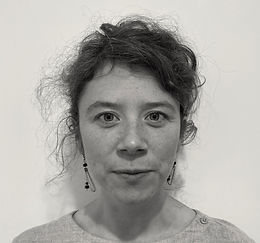-
Associate Professor (MCF HDR), Université Paris Cité & CNRS, INCC UMR 8002, Paris
-
Team leader of the Perception-Action Group
-
Co-director of the Psychology Track - cog-SUP Master
Project: LackSocialTouch
Lack of social touch: markers, mechanisms and compensation
Social touch has been shown to be crucial for development, well-being as well as to be one of the most efficient ways to communicate affective emotions. However, despite its importance, the consequences of lack of social touch has been little studied in human adults, while tactile interactions have decreased drastically these past decades with the increase of people suffering from social isolation. The COVID-19 pandemic has strengthened these phenomena, and has revealed a crucial need for a better understanding of the impacts of social touch deprivation but also to find ways to compensate. That is the main goal of the LackSocialTouch project.
Aims
First, we will investigate the behavioural markers of social touch deprivation, in studying psychological traits, sensory perception and vicarious perception of tactile interactions. Second, we will investigate the physiological and neural markers and mechanisms underlying a lack of social touch. And finally, we will evaluate to what extent vicarious stimulation (i.e. the observation of tactile interactions) can compensate for a lack of social touch. Altogether, this project aims to find behavioural and neural markers of social touch deprivation (modulation of the “mirror touch network”) and compensation effectiveness (e.g. reduced anxiety levels).
Our project proposes an innovative approach combining for the first time behavioural, physiological and neural approaches to investigate the impact but also compensation of social touch deprivation. This project is the cornerstone of a fundamental research framework opening to a better understanding of social touch perception and its underlying mechanisms. This research appears timely as finding new ways to measure the impact of the lack of touch, and compensate for it, is of particular societal and clinical importance. This research will have a resonant impact for people who are suffering from social isolation and lacking tactile interactions.
Outputs
Open Source Data
-
SoTact Picture database: https://osf.io/qja8h/
Preprints
- Ez-Zahraoui, H., & Kirsch, L.P. (2025) SoTact: a socio-tactile picture database for vicarious touch perception studies. PsyArXiv. (link)
Publications
-
de Lagarde, A., Pelachaud, C., Kirsch, L. P.*, & Auvray, M.* (2025). Paving the way for social touch at a distance: Sonifying tactile interactions and their underlying emotions. Proceedings of the National Academy of Sciences, 122(19), e2407614122. (link)
Communications
-
Kirsch, L., & Mascaro, O. (Juillet 2025). The ontogenesis of socio-affective touch perception: Assessing valence and inferring relationships from observed tactile interactions. International Multisensory Research Forum, Durham, UK
-
Kirsch, L., & Mascaro, O. (Juin 2025). The ontogenesis of socio-affective touch perception: Assessing valence and inferring relationships from observed tactile interactions. International Association for the Study of Affective Touch, Iena, Allemagne
-
Ez-Zahraoui, H., Forster, B., & Kirsch, L (Juin 2025) Somatosensory activity during the perception of vicarious social touch: an EEG-ERP study. International Association for the Study of Affective Touch, Iena, Allemagne
-
Kirsch, L. (Mai 2024). L’importance des interactions tactiles. Colloque Cognitif, Paris, France
-
Kirsch, L. (Mars 2024). The importance of socio-tactile interactions. Body Brain Workshop, Paris, France
-
de Lagarde A., Pélachaud C., Kirsch L.P.* & Auvray M.* (Dec 2023) Recognizing types of skin-to-skin touch and their emotional content through auditory signals: A study on distant social touch », JSJC 2023, Université de Lille, Lille, France.
-
Kirsch, L. (September 2023) The importance of socio-tactile interactions. Body Representation Network 2023 Workshop entitled “The interactive body: Multisensory and embodied signatures of bodies interacting in the world”, Palma, Spain
-
Kirsch, L., Baiano, C., Job, X.,Auvray, M. (September 2023) Interoception and perspective-taking: review and behavioural evidence, as part of the selected Symposium entitled ‘How internal signals inform cognition’. European Society for Cognitive Psychology. Porto, Portugal
-
Kirsch, L. (July 2023) Impacts of interindividual differences on the perception of social touch. Festival of Touch, Marseille, France
ANR-22-CE28-0005






